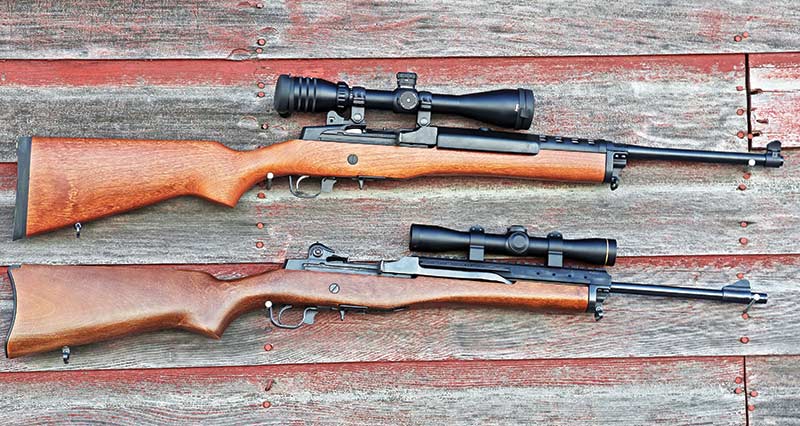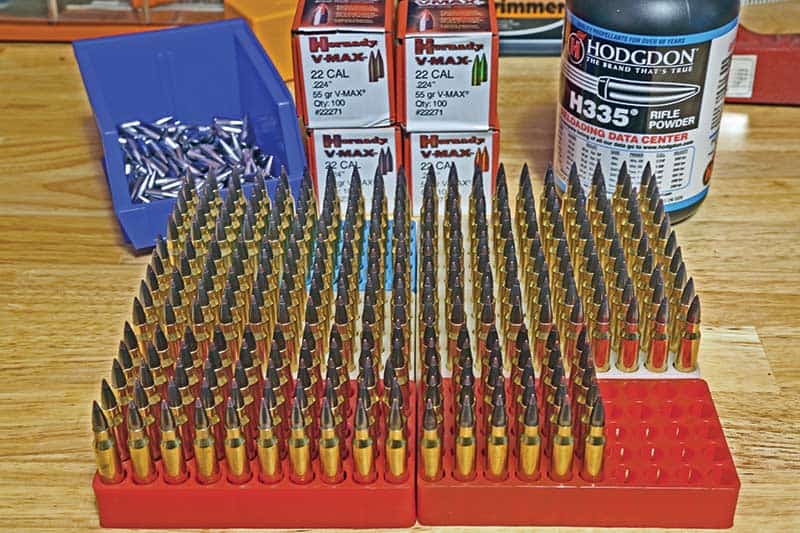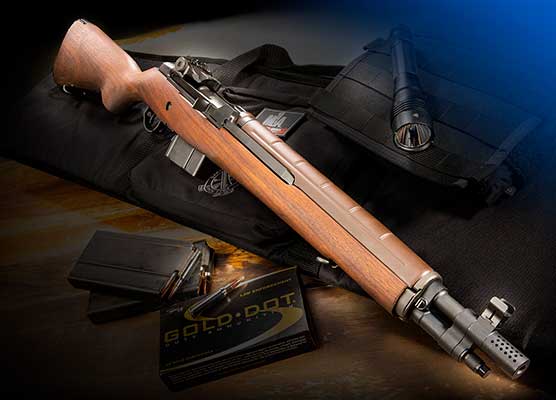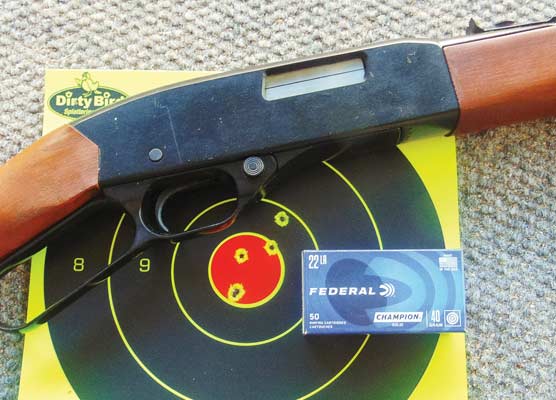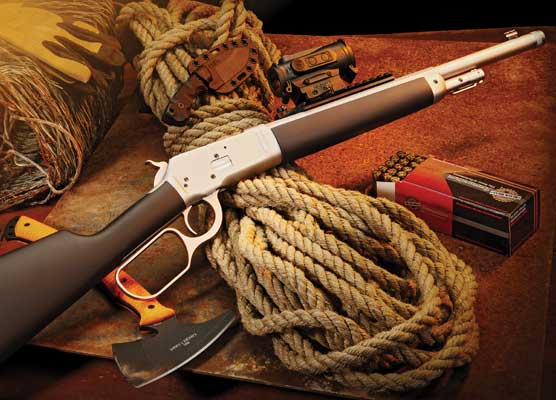Is The .223/5.56 The
Best All-Around Rifle?
Dave Makes His Case …
Strange times, my friends, strange times indeed. Just flipping through recent news items I see lumber prices up 250% since two years ago, new vehicles sitting uncompleted due to chip shortages, commodity prices leaping up, gasoline shortages, average houses selling for one million dollars, labor shortages, rising unemployment and more.
My coping solution is to contemplate my basic rifle battery and ammunition. Come what may I can keep shooting for a long time. These are the rifles you need: a .22LR, a .223 and a .308. My choices are bolt action because I love bolt actions, but if you prefer a different action type you’re still welcome at my campfire. We can discuss it while sipping coffee and gnawing on moose ribs.
If I was limited to just one rifle, I’d &*&^%$ … Sorry, I blacked out there for a second. One rifle indeed! In a fantasy world in which I owned just one rifle it would be a .223 Rem. There was a time I was indifferent to the .223, and for a time I bitterly resented it for usurping the wonderful .222 Rem. But now in both fantasy and reality the .223 Rem. rules.
The .223 Rem. of today is considerably more versatile and capable than when it first appeared more than half a century ago. Initially most commercial .223 rifles had a 1:12 or 1:14 twist. The most popular factory loads featured a 55-grain bullet at 3,200 to 3,250 fps depending on barrel length. A bit more performance than my .222 Rem. loads with a 50-grain bullet at 3,200 fps but not enough to warrant trading rifles. Military influence, not ballistics, gave the .223 an insurmountable advantage over the .222.

For teaching youngsters to shoot Dave likes this Ruger American compact model
(left) in .22LR, and American Ranch model in .223. The Ranch has a 1:8 twist and can
handle the long-range 75-grain Berger or Hornady loads. If you want to see a kid’s face
light up, watch them the first time they ring a steel plate at 500 yards.
How Change Transpired
To understand how we got here we need to look at its military origins. Some years ago I had the pleasure of meeting Eugene Stoner at the SHOT Show. We were able to sit down and chat for an hour or so, which I considered a privilege then and still do.
Back in the 1950s, he said, the U.S. military had just adopted the M14 rifle using the 7.62mm cartridge, ballistically similar to the .30-06. What might be called the “Old Guard” supported the concept of powerful battle rifles and carefully aimed fire at individual targets.
Other military theorists noted enemy soldiers for the most part don’t stand around in the open waiting to get shot. They hide behind things and shoot from cover. Combat in WWII and in Korea had shown the value of suppressive fire, “shoot and move,” and the integration of infantry, artillery and air power.
The rifle they wanted would be lightweight, with moderate recoil, selective semi- or full-automatic fire, compact and fast-handling for house-to-house fighting and adequately powerful, using non-expanding bullets. Hmmm, you don’t want much, do you? Stone said the only way he knew of to make a small non-expanding bullet behave like a bigger bullet is if it tumbles on impact. Original rifles had a 1:14 twist so bullets were just barely stable in flight, but would destabilize and tumble when they hit something.
Almost as soon as it was adopted the twist was changed to 1:12 to improve stability, which some argued also decreased effectiveness. In the ’70s and ’80s military users began shifting to heavier bullets for improved downrange ballistics, requiring faster barrel twists. It took a while, but faster twists eventually appeared on sporting rifles.
The Hard Facts
Faster twists and sleeker bullets, notably from Berger and Hornady, greatly enhance the versatility of the .223. Compare a 55-grain FMJ bullet (G1 B.C. 0.243) at 3,200 fps to a Berger VLD 80-grain bullet (G1 B.C. 0.455) at 2,750 fps. With both sighted at 200 yards, bullet drop at 600 yards is 91.5″ for the 55 grain versus 82.3″ for the 80 grain. Now check the 10 mph wind drift figures: 55 grain, 60.8″; 80 grain, 32.5″. That nearly 50 percentage advantage in wind drift is huge. Moreover the 80-grain bullet starting out 450 fps slower reaches the 600-yard line going over 400 fps faster (1,271 55 grain, 1,680 80 grain).
So what is a fast-twist .223 good for? Training with moderate recoil and noise. Teaching new shooters the fundamentals of center fire rifles and longer range shooting. Moderate cost due to smaller bullets and powder charges. Excellent hunting performance for most varmint shooting and for deer, the most popular big-game target. Untold millions and billions of .223 and 5.56 rounds have been loaded over the past 60+ years. Even in times of chronic shortages there’s a good chance of finding quality brass.
In my experience 1:9 will stabilize 70- and some 75-grain bullets, 1:8 will stabilize up to 80-grain bullets. Here’s some examples of twist rates in various rifles. The Savage Elite Precision is 1:7. Browning X-bolt, Ruger American, Sako 85 and Tikka T3X are all 1:8. Ruger’s Hawkeye, Howa, most Savage models, Kimber, Steyr and Weatherby Vanguard are all 1:9. Decide what your priorities are then buy accordingly.
